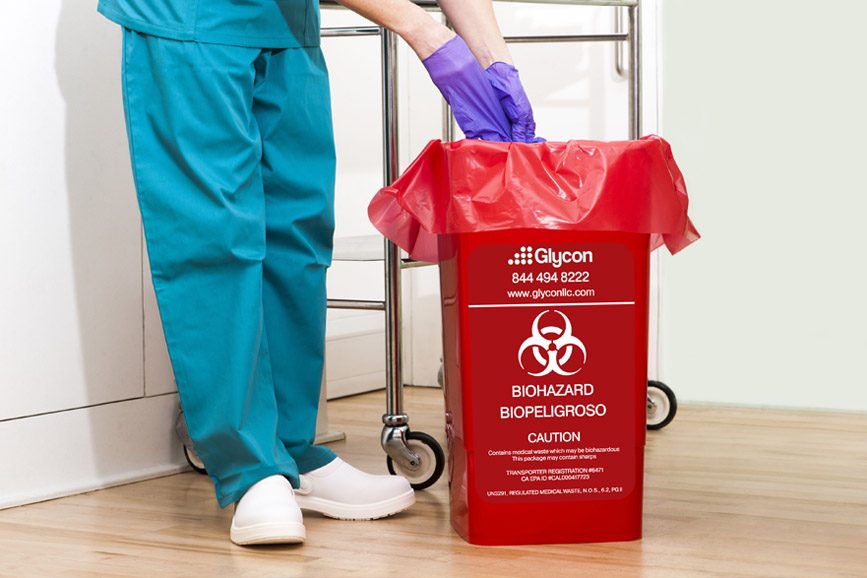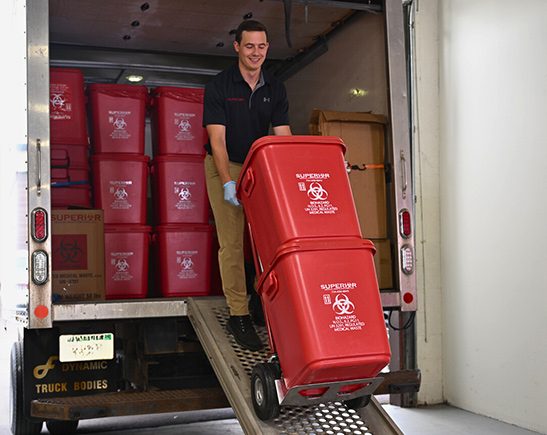Minimize Costs and Take Full Advantage Of Safety: Effective Medical Garbage Disposal Strategies
Reliable clinical garbage disposal methods are critical for medical care facilities to minimize expenses and optimize security. With the expanding problem for environmental sustainability and the boosting variety of policies bordering waste administration, it is vital for healthcare organizations to adopt efficient and certified practices. By carrying out proper partition and categorization, reliable packaging and labeling, safe transportation and handling, efficient treatment and disposal approaches, and conformity with regulatory standards, medical care facilities can make sure the risk-free and accountable monitoring of medical waste. In this conversation, we will explore each of these methods in detail, giving understandings and useful suggestions for medical care specialists to optimize their waste disposal processes.

Correct Partition and Classification
Correct segregation and categorization are crucial parts of effective clinical waste disposal methods, guaranteeing the safety of medical care employees, the general public, and the atmosphere - medical waste removal. medical waste disposal services with WasteX. By separating various sorts of clinical waste at the factor of generation, medical care centers can decrease the threat of cross-contamination and potential damage to people and ecosystems
One of the crucial aspects in proper segregation is the recognition and category of clinical waste. This includes classifying waste right into various groups, such as infectious, harmful, contaminated, or pharmaceutical waste. Each category needs certain handling, storage, and disposal methods to avoid any type of unfavorable results on human health and the setting.
Moreover, proper segregation likewise consists of using color-coded containers and tags to clearly determine and set apart the numerous kinds of medical waste. This assists healthcare workers and waste administration personnel to conveniently acknowledge and take care of the waste suitably. For instance, red containers might be used for transmittable waste, while yellow containers may be marked for dangerous waste.
In enhancement to partition, appropriate classification additionally includes the correct product packaging and control of clinical waste. This makes sure that waste is safely kept and delivered without presenting any kind of risks to individuals or the setting. Using leak-proof and puncture-resistant containers, in addition to appropriately securing and classifying them, aids to protect against any unintended direct exposure or release of harmful compounds.
Efficient Product Packaging and Labeling
Reliable product packaging and labeling play an essential role in guaranteeing the reliable and safe disposal of medical waste. Correct packaging is important to avoid leakage, breakage, or spillage during transportation and handling. It assists to lessen the danger of contamination and safeguards healthcare employees, waste administration employees, and the setting from possible risks.
Medical waste needs to be packaged in sturdy and watertight containers that are resistant to penetrate and breakage. These containers should be correctly secured to protect against any leakage. Additionally, the packaging must be able to withstand the problems of transportation, including temperature variations and harsh handling.
Classifying is just as vital as it supplies vital information concerning the materials of the waste and any type of prospective risks related to it. The tags need to include the name of the health care center, the kind of waste, and any kind of special delivery instructions. Clear and standard labeling ensures that waste management employees can easily identify and manage the waste properly.
Efficient product packaging and labeling likewise help in the appropriate partition and categorization of clinical waste. Clear labeling permits very easy recognition of various waste streams, such as infectious waste, sharps, or pharmaceutical waste. This aids in improving the disposal process and guaranteeing that the waste is dealt with or thrown away in conformity with regulative guidelines.
Safe Transportation and Handling
Ensuring the safe transport and handling of medical waste is of utmost relevance in order to stop any type of possible health and environmental dangers. Medical waste, such as sharps, polluted materials, and pharmaceutical waste, must be appropriately packaged and handled to reduce the threat of exposure to unsafe materials and pathogens.
Carrying clinical waste requires compliance with strict guidelines and standards set by ecological agencies and local authorities. These guidelines intend to safeguard the health and wellness of employees involved in waste management and prevent the launch of harmful materials right into the setting.
To ensure safe transportation, medical waste should be placed in puncture-resistant and watertight containers that are effectively sealed and identified. In addition, it is crucial to use customized lorries furnished with ideal safety and security features to deliver clinical waste. medical waste disposal services with WasteX.
Dealing with medical waste likewise requires correct training and adherence to safety procedures. Employees associated with the handling of medical waste should put on appropriate individual safety devices (PPE) such as masks, dress, and gloves to decrease the danger of exposure. They must likewise adhere to rigorous hygiene methods to avoid the spread of infections check it out and make sure the risk-free disposal of waste.
Effective Therapy and Disposal Methods
Executing appropriate treatment and disposal approaches is crucial in managing clinical waste efficiently and decreasing potential wellness and ecological threats. Medical waste, that includes find out here sharps, contagious products, chemicals, and drugs, can position significant risks otherwise dealt with and gotten rid of appropriately. There are several treatment and disposal approaches offered that comply with governing guidelines and advertise safe techniques.
One typical technique is incineration, which involves burning the waste at high temperatures. Incineration is reliable in damaging virus and reducing the volume of waste, but it can launch damaging toxins into the air otherwise properly regulated. As a result, it is crucial to utilize contemporary incinerators furnished with exhaust control technologies.
Another technique is autoclaving, which utilizes vapor and pressure to decontaminate the waste. Autoclaving works in killing virus and minimizing the volume of waste, however it needs careful tracking and upkeep to ensure correct performance. The decontaminated waste can after that be safely disposed of in a garbage dump.
Chemical therapy is an additional alternative, which includes utilizing anti-bacterials or various other chemicals to reduce the effects of pathogens. This method is typically made use of for fluid waste, such as lab specimens. It is essential to use appropriate chemicals and follow proper procedures to make certain efficient therapy and stop environmental contamination.

Compliance With Regulatory Guidelines
Abiding by governing standards is necessary in making sure proper compliance with medical waste disposal methods. These guidelines are established to secure public health, stop ecological contamination, and maintain office safety. Conformity a fantastic read with regulative standards is critical for health care centers, as non-compliance can cause fines, fines, and reputational damages.
Regulatory standards lay out the correct handling, storage, transport, and disposal of medical waste. These standards likewise resolve the partition of different waste streams, such as sharps, infectious waste, and pharmaceutical waste.
To preserve conformity, healthcare centers must establish comprehensive waste administration programs that consist of staff training, routine audits, and continuous tracking. It is important to keep current with any type of updates or changes to regulative guidelines, as techniques might develop over time. By remaining informed and applying proper procedures, healthcare facilities can reduce the capacity for governing offenses and protect the health and wellness of their team, patients, and the surrounding neighborhood.
Conclusion
In verdict, applying efficient medical garbage disposal strategies is essential for lessening expenses and taking full advantage of security. Correct segregation and categorization, efficient product packaging and labeling, safe transport and handling, and reliable treatment and disposal methods are essential steps to guarantee compliance with regulative guidelines. medical waste removal near me. By adhering to these methods, medical care facilities can shield the atmosphere and public wellness while likewise decreasing economic worries related to medical waste administration
By carrying out appropriate segregation and classification, effective packaging and labeling, risk-free transport and handling, effective treatment and disposal approaches, and compliance with governing guidelines, medical care facilities can make sure the safe and accountable administration of clinical waste. Red containers may be made use of for infectious waste, while yellow containers may be marked for hazardous waste.
Clear and standard labeling makes certain that waste management workers can conveniently identify and manage the waste suitably. (medical waste disposal services with WasteX)
Clear labeling allows for simple recognition of different waste streams, such as transmittable waste, sharps, or pharmaceutical waste. These guidelines likewise address the segregation of different waste streams, such as sharps, transmittable waste, and pharmaceutical waste.